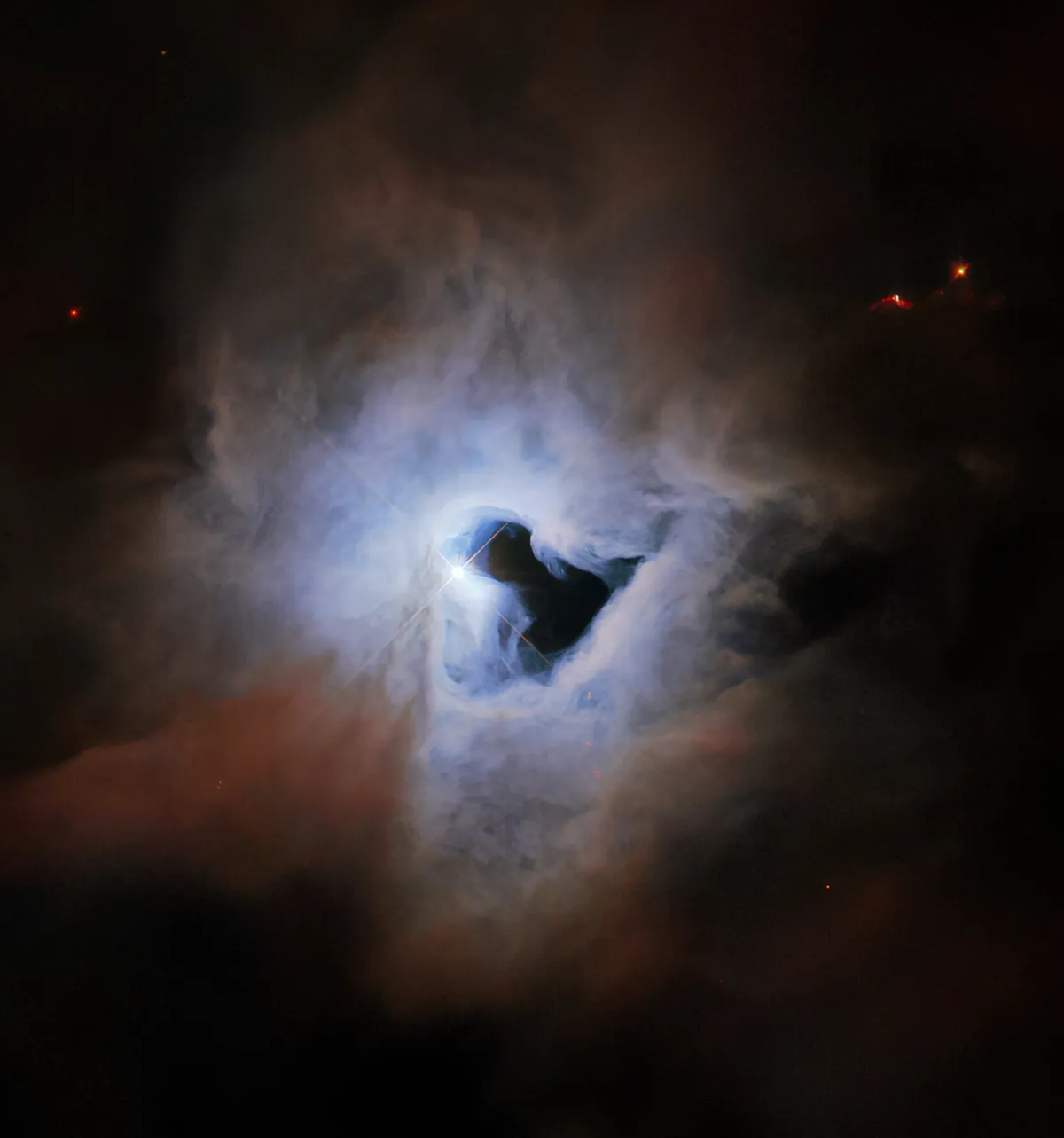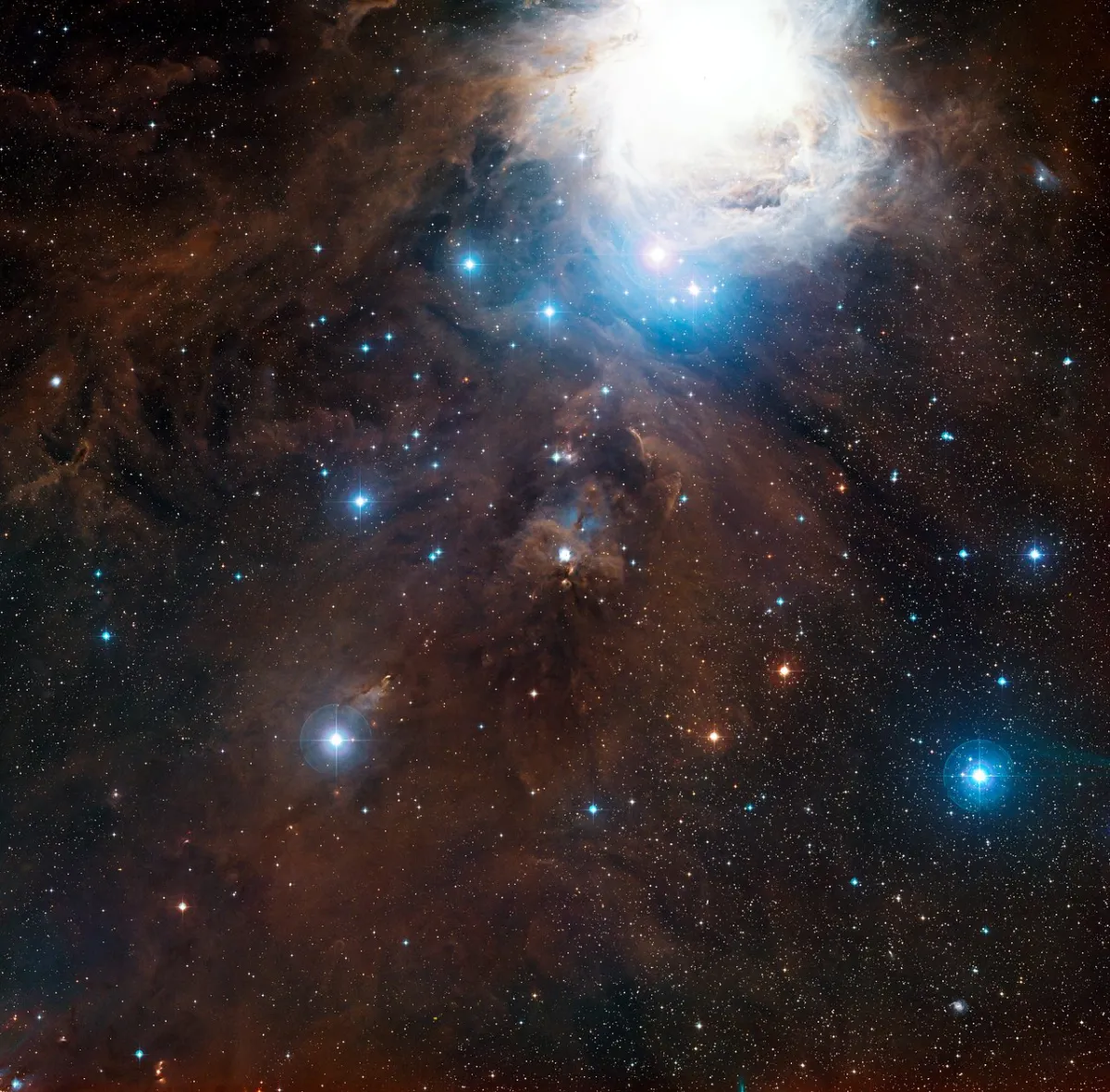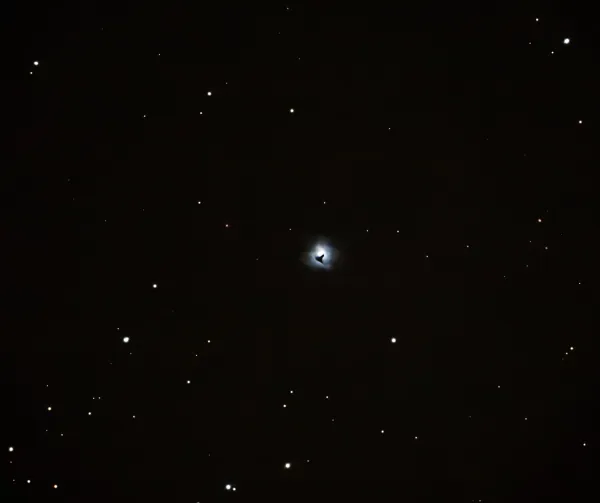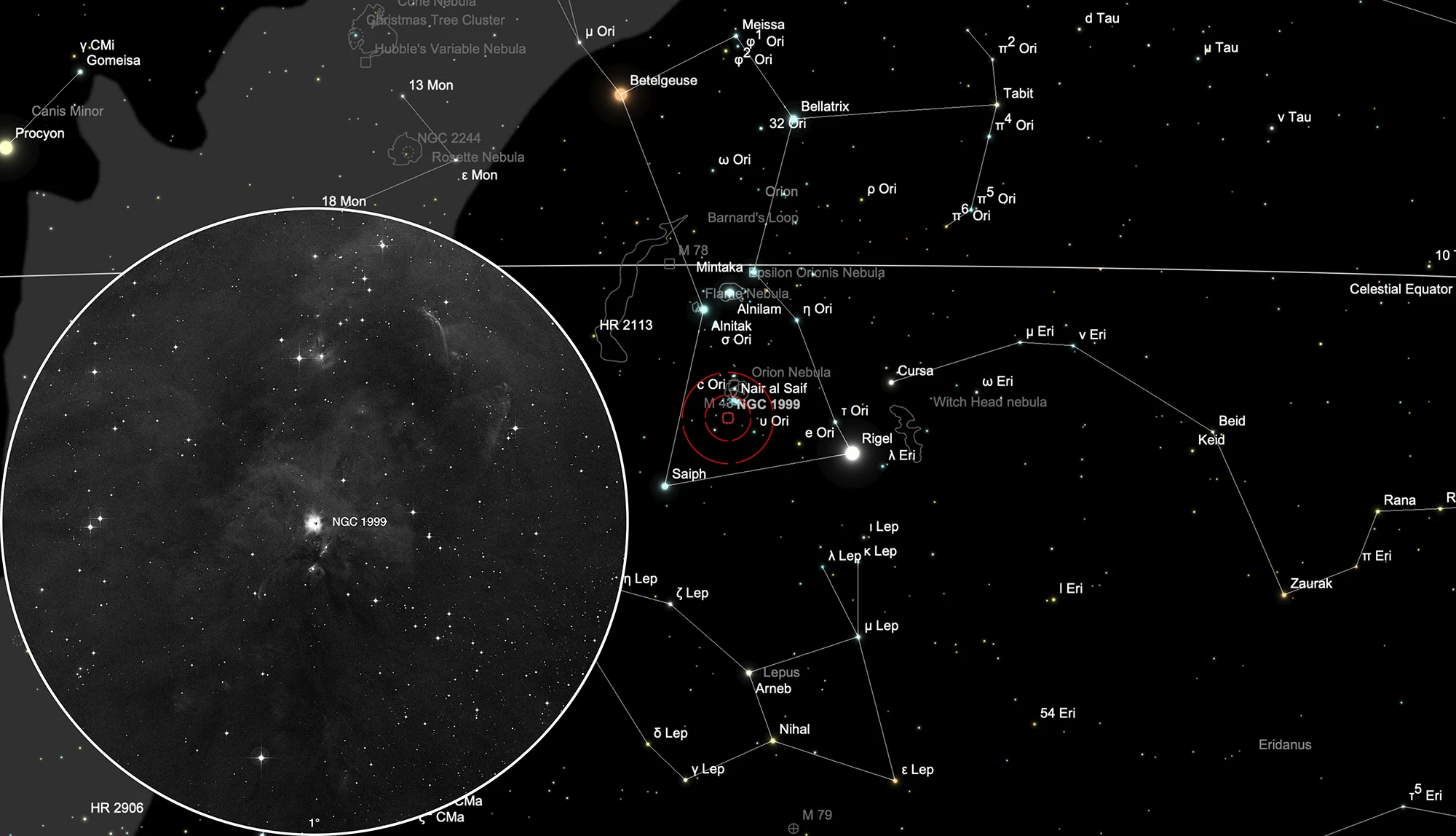Cosmic Keyhole (NGC 1999)


History
This nebula was discovered by William Herschel on 5 October 1785 using his 18.7 inch reflector. He cataloged it as IV 33 and noted: «A star with milky chevelure or very bright nucleus with milky nebulosity.» [464] Dreyer added the nebula as NGC 1999 to his New General Catalogue published in 1888. [313]
Physical Properties
NGC 1999 is a reflection nebula in in the LDN 1641 portion of the Orion A GMC (giant molecular cloud). It lies at a distance of around 1350 light-years and has an estimated size of ~10'000 AU. At first one thought that NGC 1999 is something called a Bok globule – a dense, cold cloud of gas, molecules and cosmic dust from a star forming region that blocks background light. However, follow-up observation revealed that the dark patch is actually a hole or cavity in the material producing the NGC 1999 reflection nebula, excavated by protostellar jets from the V 380 Orionis quadruple system. [638, 639]
| Designation | NGC 1999 |
| Type | EN+RN |
| Right Ascension (J2000.0) | 05h 36m 25.4s |
| Declination (J2000.0) | -06° 42' 57" |
| Diameter | 2 × 2 arcmin |
| Metric Distance | 0.450 kpc |
| Dreyer Description | * 10, 11 inv in Neb |
| Identification, Remarks | WH IV 33; GC 1202; LBN 979 |
Finder Chart
The Nebula NGC 1999 is located in the constellation Orion, approximately 1.25° south of the famous Orion Nebula Messier 42 . It is best observed in the months of August to May.
Visual Observation

400 mm Aperture: NGC 1999 appears as a round, diffuse nebula around a bright star. At higher magnification (9 mm Nagler, 200x), a triangular, dark hole becomes visible next to the star. — 400 mm f/4.5 Taurus Dobsonian, Hasliberg, 16. 12. 2023, SQM-L 21.2, Bernd Nies
635 mm Aperture: Even at low magnification (35 mm Tele Vue Panoptic, 72x), a small nebula with a dark spot next to the centre is visible around the 10.9 magnitude bright star BD -06°1253. With increasing magnification (10 mm Tele Vue Delos eyepiece, 254x), the contrast is optimal, and the key shape is clearly recognizable. The nebula is conspicuous and appears rich in detail. An unusual, often overlooked object. — 25" f/4 Obession Dobsonian, Astrofarm Tivoli, Namibia, 16. 9. 2023, Bernd Nies
762 mm Aperture: The nebula, which completely surrounds the star, shows visually and EAA-photographically close to the star a keyhole or a black spot of corresponding shape. Since the nebula surrounds the star to a very limited extent, one almost has the impression that the star itself contains the keyhole. — 30" SlipStream-Dobson f/3.3, Hasliberg, 16. 12. 2023, SQM-L 21.38, Eduard von Bergen
